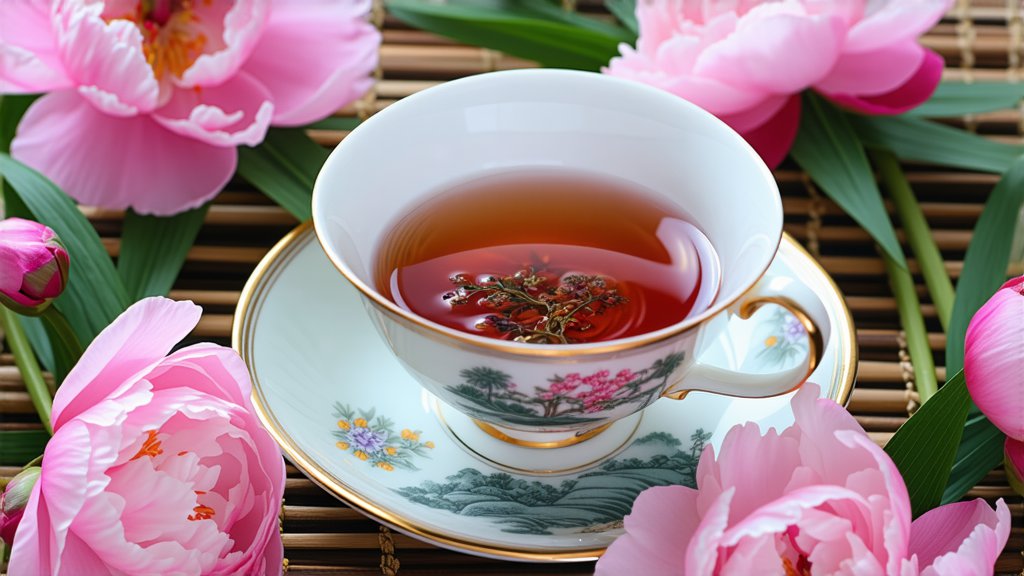
In the vast and diverse landscape of Chinese tea culture, Bai Mudan, also known as White Peony, stands out as a quintessential representation of the white tea category. This exquisite tea, hailing from the lush hills of Fujian Province, has captivated tea enthusiasts worldwide with its delicate flavor profile, unique aroma, and rich cultural heritage. As we embark on this journey to explore the depths of Bai Mudan tea, we will delve into its historical roots, varieties, intricate production processes, and the art of appreciating this remarkable beverage.
A Glimpse into History
The origins of Bai Mudan can be traced back to the early Tang Dynasty (618-907 AD), making it one of the oldest tea varieties in China. Its name, "White Peony," is derived from the distinctive appearance of the fully dried leaves, which resemble the petals of a peony flower. Over the centuries, Bai Mudan has evolved into a symbol of refinement and elegance within Chinese tea culture, often associated with poetic gatherings and scholarly pursuits.
Varieties and Classification
Bai Mudan tea comes in two main grades: Bai Mudan Wang (White Peony King) and regular Bai Mudan. The former consists of buds only, while the latter includes both buds and leaves. These classifications are based on the proportion of buds to leaves and the overall quality of the plucked material. Higher-grade Bai Mudan typically features a greater number of buds, which contribute to a more refined taste and aroma.
Craftsmanship: The Art of Bai Mudan Production
The production of Bai Mudan tea is a meticulous process that requires precision and expertise. It begins with the careful handpicking of young shoots during the spring season, when the tea plants are at their freshest and most flavorful. The picked leaves and buds undergo a series of steps, including wilting under natural sunlight or indoor shade to remove excess moisture, followed by gentle rolling to break down cell walls and facilitate oxidation.
Next comes the crucial step of drying, where the leaves are spread thinly over bamboo trays and baked slowly at low temperatures. This not only further reduces moisture content but also develops the tea's characteristic color and aroma. Finally, the dried leaves are sorted and graded according to size and quality before being packaged for distribution.
Appreciating Bai Mudan: A Sensory Experience
To truly appreciate Bai Mudan tea, one must engage all five senses in a mindful tasting ritual. Begin by observing the dry leaves, which should appear silvery-white with a slight greenish hue. Upon brewing, watch as the leaves unfurl gracefully in the hot water, releasing a light, golden-yellow liquor.
As you bring the cup closer to your nose, take in the subtle floral notes reminiscent of peonies, mingled with hints of honey and fresh grass. Sip slowly, allowing the smooth, mellow flavor to coat your palate, revealing layers of sweetness, slight bitterness, and a lingering aftertaste that speaks to the tea's complexity.
Conclusion
Bai Mudan tea encapsulates the essence of Chinese tea artistry—a harmonious blend of nature's bounty and human craftsmanship. From its storied past to its present-day status as a cherished delicacy, this white tea variety continues to enchant tea lovers around the globe. Whether enjoyed alone as a moment of tranquility or shared among friends in celebration, Bai Mudan invites us to savor life's simple pleasures and connect with centuries-old traditions.
By exploring the history, varieties, and intricate production methods of Bai Mudan tea, we gain not only an appreciation for this exceptional beverage but also insight into the profound cultural significance it holds within Chinese society. As we raise our cups to toast this timeless treasure, let us remember the hands that have nurtured it through generations and the stories woven into every delicate leaf.